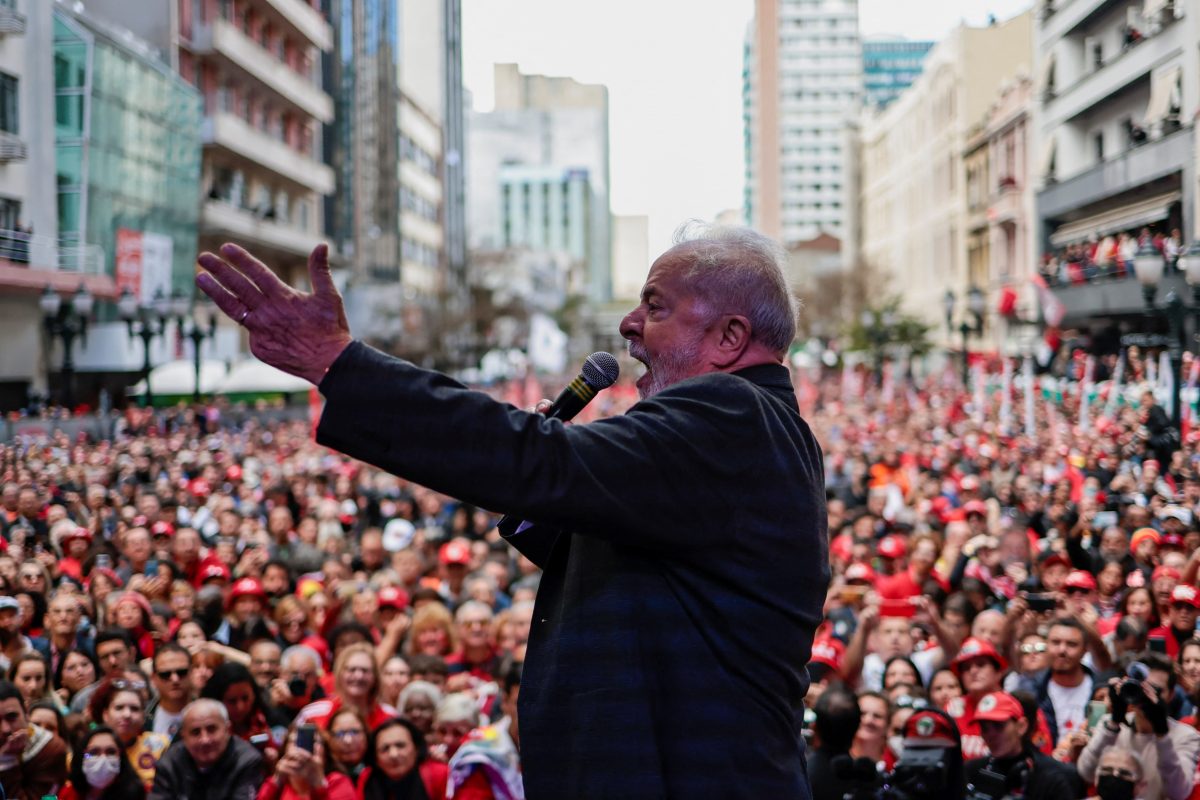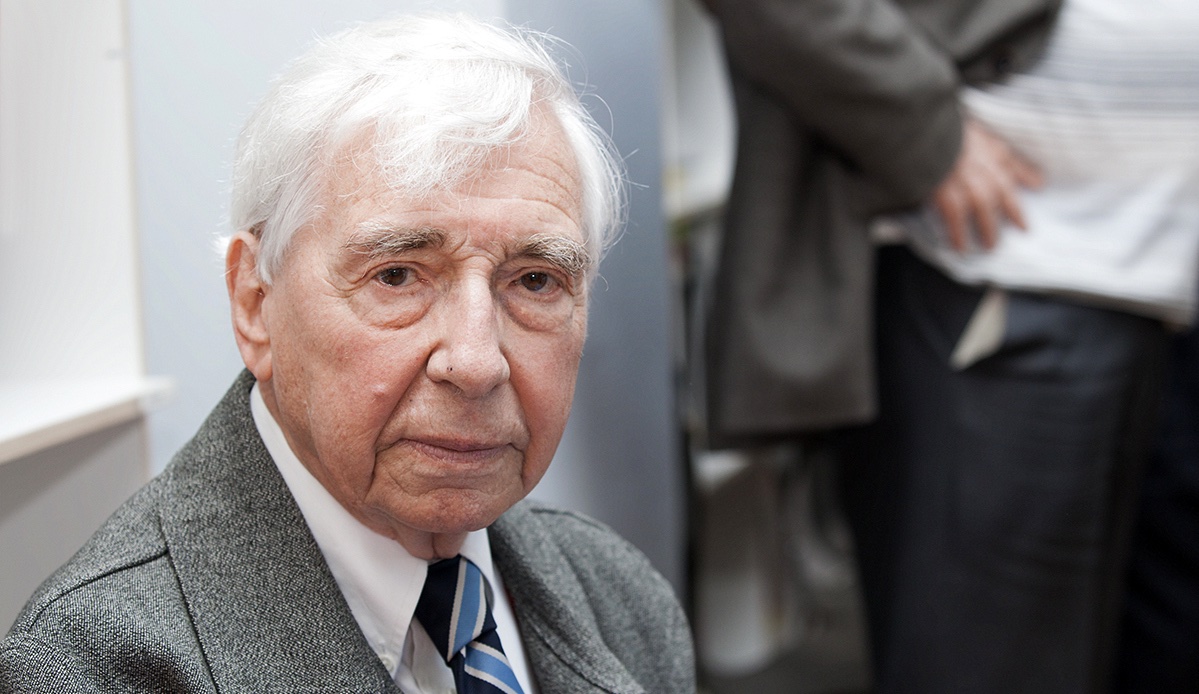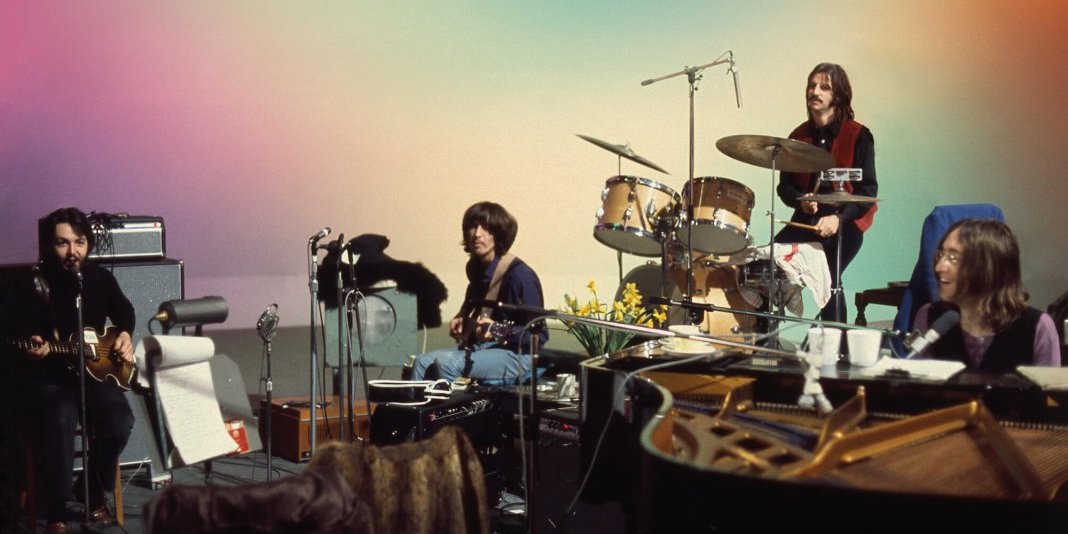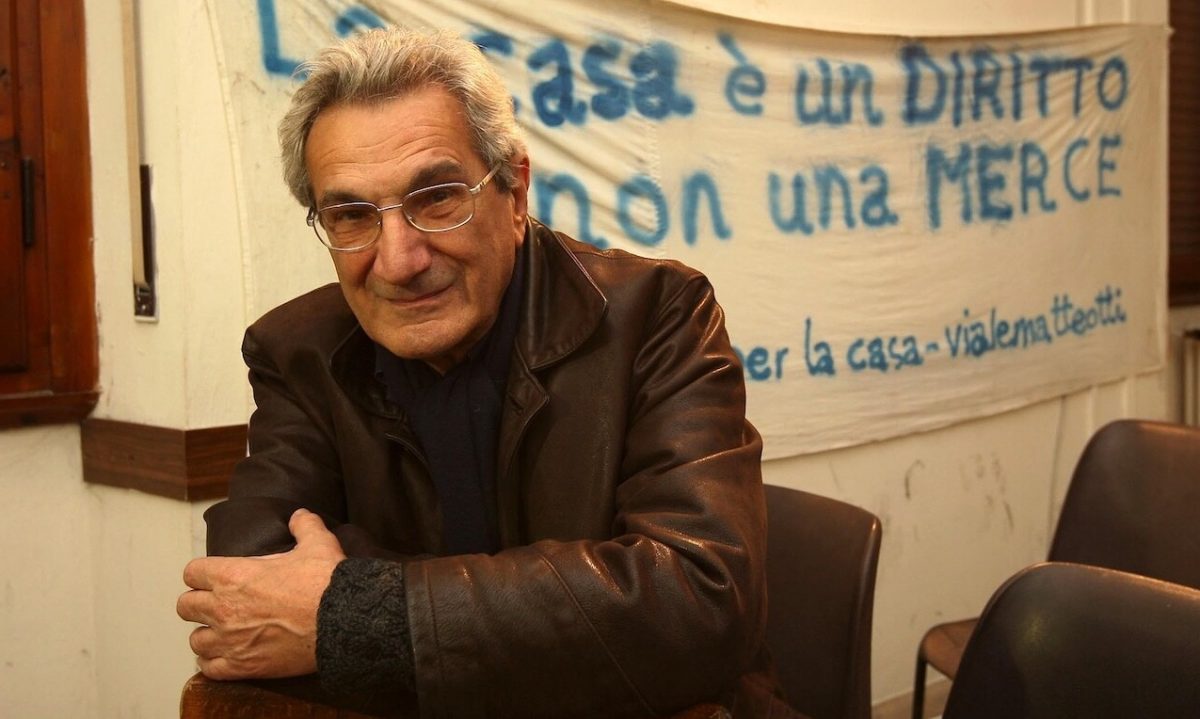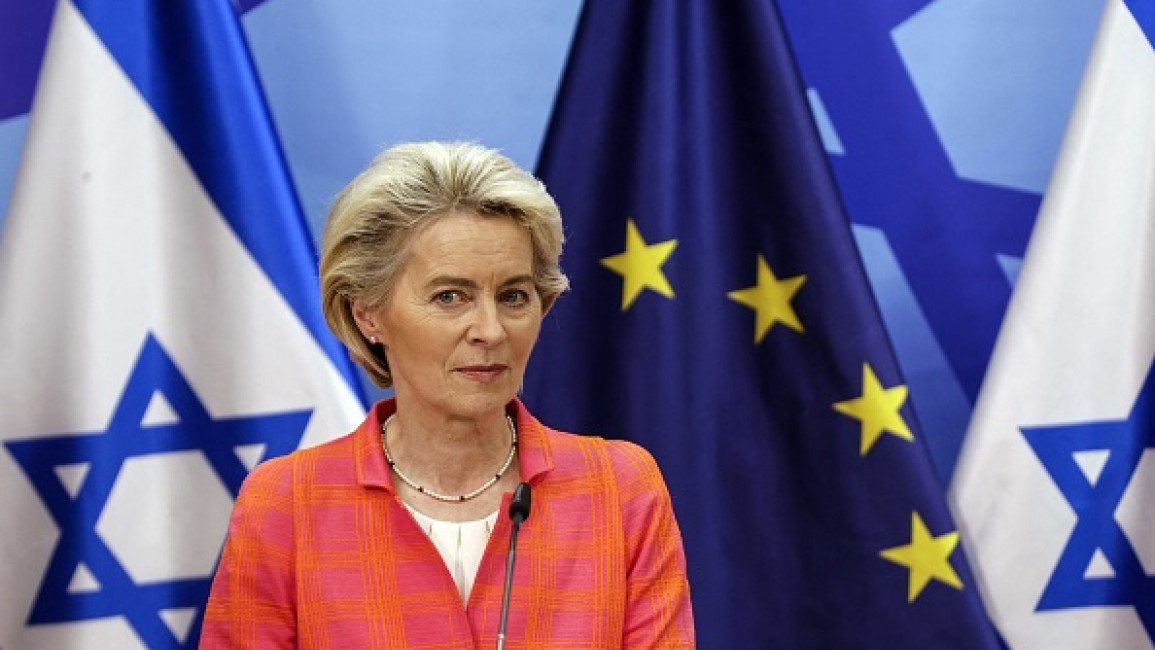For three months now, I have had my breakfast amid the rubble. I sip my coffee as the agony of the injured blares from the TV. At supper, I take a forkful of greens as the bombs rip children to pieces. I peel my apple to the sound of women’s desperate cries. Perhaps all these horrors will make us put on weight – for we are becoming, unawares, followers of Dolmancé, the master of ceremonies whom de Sade puts in charge of Eugénie’s immoral education, and who closes La philosophie dans le boudoir (1795) with the immortal words: ‘It’s been a good day; I never dine better, I never sleep so peacefully, as when I have sullied myself sufficiently with what idiots call crimes.’
We are growing habituated to the savagery, day by day. Then we wonder how the Germans could have ignored the genocide that was being perpetrated all round them. We, unbending guardians of Western values, implacable defenders of international law: we dine on mass murder bien chambré. We are deeply pained by the deaths of ‘innocent civilians’, of course, saddened by the hospitals razed to the ground. Our hearts go out to the ragamuffins with no future who assail the few aid trucks that reach the Strip. We are distressed by the number of journalists being slaughtered. But the ‘humanitarian catastrophe’ in Gaza does not stop us sleeping at night, even as the situation worsens week by week.
The structure of this ‘humanitarian catastrophe’ recalls that of the climate emergency. The helplessness of the UN and NGO workers amid the ruins of Gaza bring to mind those environmental activists who try to clean up the oceans a teaspoon at a time – faced with the impossibility of alleviating what they should instead be preventing from taking place. Just as the will of governments to deal with the climate emergency is expressed by organising conclaves in the world’s biggest oil potentates, attended by 2,456 lobbyists from the fossil fuel industry, and presided over by presidents of its largest companies, so too it is the president of the state that organizes airlifts of weapons to Israel that urges ‘restraint’ and warns against ‘indiscriminate bombing’. According to CNN, at least 22,000 of the 29,000 bombs dropped on Gaza up to 13 December were supplied by the USA. This is a close cousin of greenwashing: we supply the bombs and we feel sorry for their victims. Call it compassionate bombing.
It is little wonder that the global South finds the West hypocritical. This would be less apparent if the Israeli government and its supporters would simply state outright that Israel has the right to take revenge for the attack it suffered. Revenge has an ancient if inglorious tradition, enshrined in the Bible itself – ‘An eye for an eye, a tooth for a tooth’ – and, one might add in this case, ‘a child for a child’. And vengeance defines its own limits: by definition, it must be commensurate with the offence suffered. Instead, we are now reaching almost twenty Palestinians killed for every Israeli killed. For proclaiming that the goal is not revenge but defence evades the problem of magnitude, of measure: one can continue to kill ad libitum because one is merely ‘defending’ oneself, with armoured vehicles and total air superiority against an enemy that has no heavy weaponry.
The truth is that is has become impossible to state publicly a desire for revenge. Revenge is the narrative engine of endless action films (the peaceful citizen who transforms himself into a ferocious executioner to avenge the massacre of his family and so on); but beyond the culture industry it has become taboo, unspeakable, excised from public discourse. This is key to what Bourdieu calls denegation. Denial is exercised when actions can only be performed if we deny to ourselves that we are doing them. Denegation can be exercised in fields such as the art market: the artist can only obtain financial reward for their work if they convince themselves that they are motivated purely by artistic concerns. But in other areas it is far less innocent. The concentration camp guard cannot do his job properly if he thinks he is human scum. Even the SS officer must be able to look at himself in the mirror in the morning while shaving. In kinder terms: to be a good warden, you must have assimilated the Foucauldian critique of disciplinary systems.
My personal experience with political leaders – however sporadic and superficial – allows me to say that the cynicism hypothesis (that politicians are cynics who lie knowing they are lying) is often too laudatory, it gives them too much credit. Politicians almost always end up believing their own bullshit. In many situations, cheating oneself is the only option. There is a stage where the hypocrite lies to himself to such an extent that he is no longer aware of his own hypocrisy. He really thinks he possesses the virtues he affects, defending the values that he tramples. Hypocrisy allows us to reconcile ourselves to that part of ourselves that we do not like but which we cannot do without. And what is valid on a personal level is valid on the terrain of ideology – it pertains to what is socially sayable and what is not. Hypocrisy becomes all the more necessary when it comes to public opinion – its growth has been a fruit of the formation of public opinion, and has become an indispensable tool of politics.
Although La Rochefoucauld’s definition (‘Hypocrisy is the homage that vice pays to virtue’) is more acute, let us proceed with the conventional one provided by Webster’s dictionary: ‘Hypocrisy. The pretence of having a virtuous character, moral or religious beliefs or principles etc, that one does not possess’. The hypocrite is thus not simply a liar. Con men lie but are not hypocrites. The Prince as Machiavelli describes him lies all the time but is not a hypocrite. The spy who pretends not to understand Chinese in order to gather information dissimulates but is not a hypocrite. The hypocrite is one who performs immoral acts while claiming to defend virtue: who unleashes war in the name of peace.
The canonical expression of this attitude is found in Jonathan Swift’s ‘A Modest Proposal’. In it he presents a horizon of virtuous reforms intended to prevent the children of Irish paupers from being a burden on their parents or their country. His proposed solution is touted as ‘a fair, cheap and easy method of making these children sound and useful members of the commonwealth’; it has the great advantage ‘that it will prevent those voluntary abortions, and that horrid practice of women murdering their bastard children, alas! too frequent among us, sacrificing the poor innocent babes’. Swift goes on to list its other advantages: it would give ‘a great inducement to marriage, which all wise nations have either encouraged by rewards, or enforced by laws and penalties’; it would increase the care and tenderness of mothers towards their children, as well as restore the national accounts and balance of trade. That the plan is to sell one-year-olds as piglets or lambs to be cooked (in various recipes) becomes only a technical detail.
Swift’s black humour is not an end in itself. He tells us that what we call hypocrisy should not be judged by moral criteria, which is how hypocrisy demands to be understood and judged. The modest proposal implies instead that hypocrisy should be judged by its success or failure. Recent studies devoted to the subject – for instance David Runciman’s Political Hypocrisy (2008) and Martin Jay’s The Virtues of Mendacity (2010) – have taken a similar view. In what does the success of hypocritical behaviour consist? In not being revealed as such. A lie is effective if it is taken as true. Hypocrisy is useful as long as and only if it does not appear hypocritical. We are familiar with the usefulness of ‘good hypocrisy’ from everyday life, as in the relationship between two people who detest each other, but in public behave civilly. This fiction lightens the atmosphere and makes social interaction easier: better than a world where people start beating each other up as soon as they disagree on something. When a tyranny is fiercely despotic, it fools no one if it merely pronounces itself humane: the pretence of humanity must be accompanied by at least a sprinkling of it.
For Jay, hypocrisy is essential to political life. We see its application everywhere. The claim that a regime need only hold elections to be democratic, for example, is clearly false. As can be seen from James Madison’s account of the drafting of the constitution, the founding fathers of the United States did indeed want to establish a republic, but not a democracy (remember that for much of the 19th century the word ‘democracy’ had the same subversive and criminal connotations as the term ‘terrorism’ has today). This hypocrisy is plain for all to see: just consider the case of central banks, which are guaranteed the strictest autonomy and ‘independence’ from political power, i.e. from the popular vote. In such parliamentary (or presidential) republics, the people theoretically have power over everything except the most important economic decisions.
In reality, alternation in a liberal electoral regime simply constitutes a limit on political violence. It ensures that whoever loses the contest does not end up being thrown into the ocean from a plane (as the South American military did in the 1970s), that the opponent is not locked up in prison, his property confiscated, his family sold into slavery, as happened for millennia in countless societies. Hence the merit of representative republics: they bring us out of the Hobbesian state. The problem is that the limitation of force holds only as long as the political struggle is restricted to a clash between different factions of the dominant social bloc. Rather than establishing majority ruling, it ensures protection for the ruling minority. As soon as its power is challenged, this no longer applies. That is why opponents were locked up in stadiums in Chile or disappeared in Argentina, Uruguay, Brazil. The hypocrisy of the ‘democratic’ set-up becomes plain when the myth of the ‘sovereign people’ is exposed. Indeed, those who do not countersign the treaty limiting political violence and ensuring the same ruling bloc stays in power are accused of ‘undermining democracy’.
Similar reasoning applies to today’s humanitarian imperialism. It must provide at least some semblance of benefit for the subaltern nations, just as the elective republic must grant the ‘people’ a sphere, however narrow, secondary and irrelevant, in which they are free to decide. But here there is an added complication. In the words of Erwin Goffmann, this play has to persuade two different audiences; one is the imperialists (persuading them that it is worth investing resources in this ‘imperial-humanitarian’ mission); the other is the subjects, to convince them that this is the best of all possible empires, the most humane, the one that most alleviates poverty and suffering. Sometimes these are simply incompatible. When Gladstone spoke of ‘liberal imperialism’ in the late 1800s, it sounded convincing to British ears, making them proud to shoulder the burden of civilising its ungrateful subjects. But it certainly did not convince the Indians and other colonised people, exterminated by the colonial famines famously recounted by Mike Davis.
The fiction that the empire rules for the benefit of its subaltern nations has proven more convincing at certain moments. After the Second World War and throughout the Cold War, to secure its loyalty and avoid defections the US ensured unprecedented prosperity for its vassals. It developed the strategy of ‘success stories at the borders’: the empire’s frontiers (South Korea, Germany, Japan, Italy) presented as veritable economic miracles. But once the Cold War ended, this narrative began to falter. It has been more than 30 years since the GDPs of Japan and Italy grew by a tenth of a point in real terms. The sullen face of empire has begun to show itself, through the blackmail of debt, the use of sanctions, and the increasingly frequent recourse to arms.
The narrative of the state of Israel is also addressed to distinctly different audiences (though never to the Palestinians who have, et pour cause, always rejected it, from the 1948 Nakba to the 1967 and 1973 wars, to Sabra and Shatila in 1982, to the Intifada, and on to today). One is the G7, which includes the countries involved, in one way or another, in the Shoah. The exemplary case is Germany, where as Moshe Zimmermann writes, the Holocaust has paradoxically become an effective public relations tool:
Germans discovered yet another surprising advantage of relating to the Holocaust as a part of their evolving present: the intensive work of memory and repentance, the ubiquitous presence of the memory of the Holocaust (for example, the Stolpersteine, or the commemoration of the Kristallnacht on 9th November every year) are interpreted by the observers of this society as clear signs of strength, respectability and honesty. Even in China there is widespread admiration for Germany thanks to its policy of “coping with the past” and reconciliation with the historical victims of the Germans, the Jews. Chinese thus wish that Japan would behave in the same way towards China, Korea or any other victim of Japanese belligerence in the first half of the twentieth century. In other words, as paradoxical as it may sound, the Holocaust is at the present an instrument of good public relations for the Germans.
The other audience is the Israelis themselves and the Jewish diaspora, particularly in the US. Here it has another objective. As Zimmermann writes: ‘Accepting the monocausal connection between antisemitism and the Holocaust not only supports the argument that criticism of Israeli policies must be automatically categorised as antisemitism, but that its predestined outcome will be yet another Holocaust’. The current crisis is exposing the hypocrisy underlying such narratives. In a sense, this hypocrisy is revealing itself because it has ceased to be sufficiently hypocritical, because behind the right to defence it has shown the ruthless right to endless revenge. Palestinians will never forget this ongoing attempt to wipe an entire people off the face of the earth. For diaspora Jews and Israelis alike, it will now be difficult to see themselves as the descendants of the ‘righteous’. I remember how moved I was by André Schwarz-Bart’s novel The Last of the Righteous (1959), all the more so because my mother had been interned in Dachau. But today, the Israeli reaction has challenged the legitimacy of this kind of defence of Israel. Germans are forced to question whether the thesis, enunciated by Angela Merkel, that Israel’s existence constitutes the Staatraison of the German federal state still holds up under the bombs of Gaza. And perhaps today Westerners, and not only Germans, should start asking themselves why on earth, almost 80 years later, it is the Palestinians who have to pay for Hitler’s crimes.
Read on: Alexander Zevin, ‘Gaza and New York’, NLR 144.

